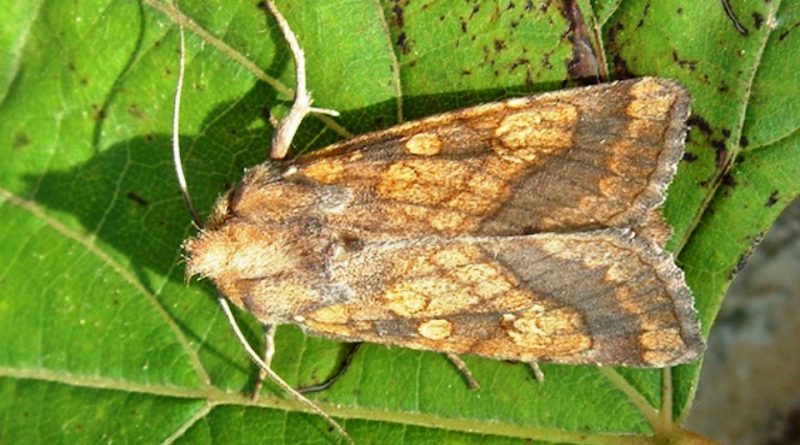Gortyna xanthenes
Gortyna xanthenes
The artichoke moth (Gortyna xanthenes Germar, 1842) is a moth belonging to the Noctuidae family.
Systematics –
From a systematic point of view it belongs to:
Eukaryota Domain,
Kingdom Animalia,
Sub-kingdom Eumetazoa,
Superphylum Protostomy,
Phylum Arthropoda,
Subphylum Tracheata,
Superclass Hexapoda,
Insecta class,
Subclass Pterygota,
Endopterygota cohort,
Superorder Oligoneoptera,
Panorpoidea section,
Order Lepidoptera,
Suborder Glossata,
Infraorder Heteroneura,
Ditrysia Division,
Superfamily Noctuoidea,
Noctuidae family,
Genus Gortyna,
G. xanthenes species.
The terms are synonymous:
– Hydroecia franciscae Turati 1913;
– Hydroecia ifranae Le Cerf 1933.
Geographic Distribution and Habitat –
The artichoke moth is a moth found in an area that includes: Canary Islands, Balearic Islands, Corsica, Sardinia, Sicily and Malta, Portugal, Spain, France, Italy and Greece.
This insect is one of the most important parasites of the artichoke in the lower Mediterranean and is also a species that affects other plants such as other composites, broad beans, etc.
Morphology –
The Gortyna xanthenes is a butterfly with a wingspan of 50-60 mm, with the front wings that are greyish yellow with a dark brown terminal band with yellow spots and the hind wings of a smoky-gray color.
The mature larvae are about 50 mm long and are ocher yellow (reddish in appearance when young), with the body strewn with blackish tubercles distributed in a regular way.
Attitude and Life Cycle –
The adults of the Gortyna xanthenes flicker in the period from September to November and the female lays up to 1300 eggs in 2 or 3 groups at the base of the feet of the Artichoke or on the old or dry leaves present in the fields or directly on the ground.
The eggs hatch in the period of January-February, the young larvae reach the host plants and undermine their leaves (in particular their large veins), then reach the stem, undermining it, and finally the flower head which they undermine and gnaw.
When the larvae are mature, they follow the reverse path, descending, through internal tunnels, to the collar or roots where they crystallize.
It is a moth which therefore completes one generation per year.
Ecological Role –
The artichoke moth is a butterfly that can represent a factor of substantial damage towards the artichoke where its larvae, in the first stages, feed on the upper epidermis of the leaves. Subsequently, they penetrate the veins and eventually eat through the center of the stem and reach the head where they form large galleries. The pupa develops inside this gallery.
Its damage can be considerable; the flower heads are lost and furthermore, the weakened vegetable no longer produces flowers.
It is a nocturnal moth whose damage is represented by the tunnels dug by the larvae at the level of the stems and flower heads of the infested plants.
The control of this phytophagus must be carried out with various techniques such as that of the intercropping of crops, according to recent agro-ecological guidelines, the use of early cultivars (we try to use varieties whose harvest anticipates the moment in which the larvae bring on flower heads), increase in crop rotations and rotations, elimination of infested stumps (already from the first year).
The chemical control is carried out either at the moment of oviposition of the adults, for this purpose monitored with sexual traps (the pheromone is not yet well standardized), or during the spillage period of the young larvae.
Guido Bissanti
Sources
– Wikipedia, the free encyclopedia.
– Russo G., 1976. Agricultural Entomology. Special Part. Liguori Editore, Naples.
– Tremblay E., 1997. Applied entomology. Liguori Editore, Naples.

